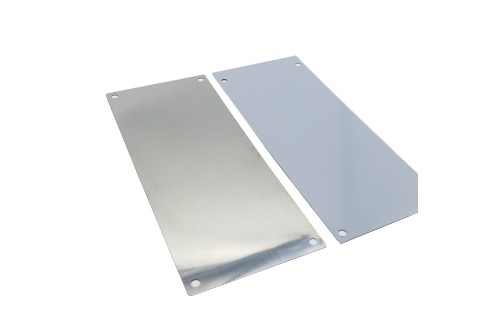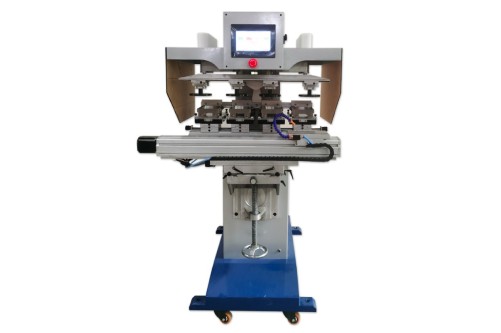Introduction
Carbide rings play a crucial role in pad printing applications, especially in ink cups, where they serve as vital components. Ensuring the longevity and wear resistance of these carbide rings is essential for the efficiency and cost-effectiveness of pad printing processes. However, various environmental factors can significantly impact the wear resistance of carbide rings, thereby affecting the overall performance and lifespan of pad printing equipment.

Understanding Carbide Rings
Carbide rings, commonly made from tungsten, possess exceptional hardness and wear resistance properties. These characteristics make them ideal for withstanding the abrasive nature of pad printing inks and the repetitive motion involved in printing operations. Carbide rings act as seals in pad printing ink cups, preventing ink leakage and ensuring precise ink transfer onto the printing substrate.
Impact of Environmental Factors
Environmental factors such as temperature variations, humidity levels, and chemical exposure can influence the wear resistance of carbide rings in pad printing ink cups. Temperature fluctuations can affect the material properties of carbide rings, leading to changes in hardness and brittleness. Humidity and moisture levels can promote corrosion and oxidation, compromising the integrity of carbide rings. Additionally, exposure to harsh chemicals in printing inks and solvents can accelerate the wear and deterioration of carbide rings.
Strategies for Enhancing Wear Resistance
To enhance the wear resistance of carbide rings in pad printing ink cups, several strategies can be employed. Carbide Ring For Pad Printing Ink Cup suppliers should consider selecting carbide materials with optimal compositions and properties for specific printing environments. Coating options such as titanium nitride or diamond-like carbon can provide additional protection against wear and corrosion.
Surface treatments such as polishing or shot peening can improve surface hardness and durability. Furthermore, implementing environmental control measures such as temperature and humidity regulation in printing facilities can help mitigate the effects of ecological factors on carbide ring wear.
Case Studies and Practical Applications
In real-world printing settings, Carbide Ring For Pad Printing Ink Cups suppliers often encounter challenges related to environmental factors impacting wear resistance. However, by implementing appropriate strategies and solutions, the longevity and performance of carbide rings can be significantly improved. Case studies highlighting successful implementations of wear-resistant solutions can provide valuable insights and guidance for users seeking to optimize their pad printing processes.
Case Study 1: Temperature Regulation
A Carbide Ring For Pad Printing Ink Cups supplier noticed increased wear on carbide rings in ink cups installed in printing facilities with fluctuating temperatures. By installing temperature control measures such as air conditioning and insulation, they could maintain stable temperatures within the printing environment. This resulted in reduced thermal expansion and contraction of carbide rings, prolonging their lifespan and improving overall printing quality.
Case Study 2: Surface Coatings
Another Carbide Ring For Pad Printing Ink Cups supplier experimented with different surface coatings to enhance wear resistance. By applying a thin layer of titanium nitride coating to carbide rings, they observed a significant reduction in wear rates and improved resistance to chemical corrosion. This innovative solution allowed their customers to achieve longer maintenance intervals and reduced downtime in pad printing operations.
Practical Recommendations
Based on these case studies and experiences, Carbide Ring For Pad Printing Ink Cups suppliers can offer practical recommendations to their customers:
1. Invest in Environmental Control: Implementing temperature and humidity control measures in printing facilities can help minimize the impact of environmental factors on carbide ring wear.
2. Consider Coating Options: Explore surface coating options such as titanium nitride or diamond-like carbon to enhance carbide rings’ wear resistance and durability.
3. Regular Maintenance: Establish regular maintenance schedules for inspecting and replacing worn carbide rings to prevent downtime and ensure consistent printing quality.
4. Material Selection: Work closely with suppliers to select carbide materials with optimal compositions and properties tailored to specific printing applications and environmental conditions.
Conclusion
In conclusion, environmental factors are crucial in determining carbide rings’ wear resistance and longevity in pad printing applications. Carbide Ring For Pad Printing Ink Cup suppliers must understand these factors and offer tailored solutions to address them effectively. By implementing strategies such as temperature regulation, surface coatings, and regular maintenance, users can optimize the performance and durability of carbide rings, leading to improved efficiency and cost-effectiveness in pad printing operations.
Further more, except for carbide ring, ceramic ring is also a good choice for pad printing machine.







